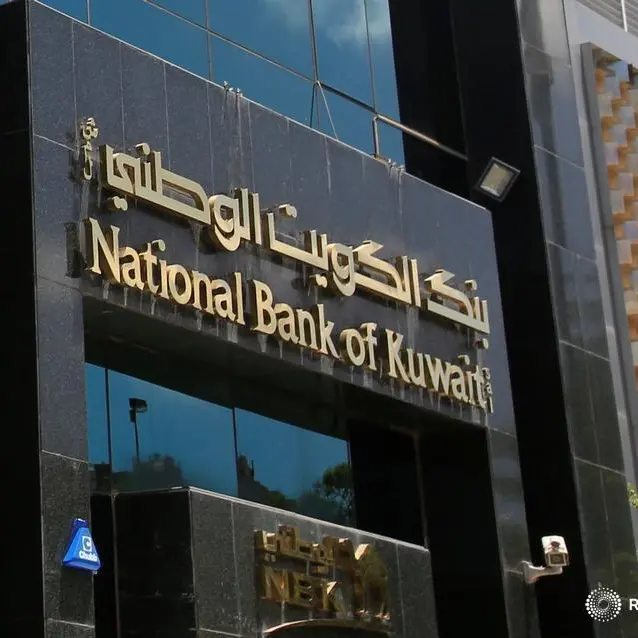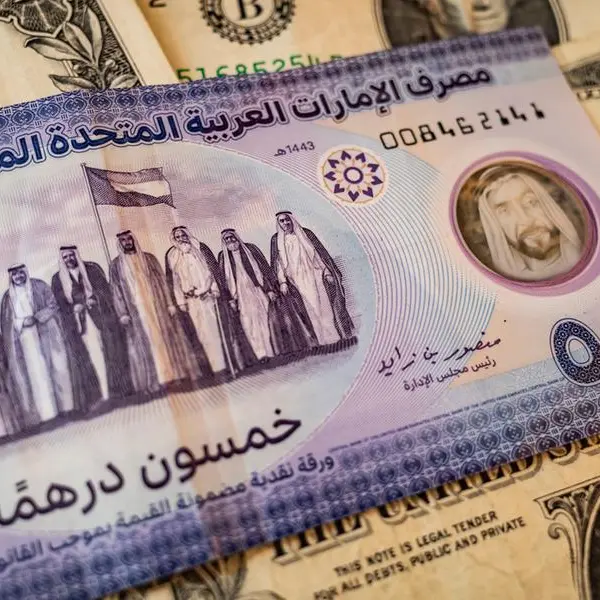PHOTO
Remittances remained a crucial source of external finance for developing countries in 2023
After a period of strong growth during 2021-2022, officially recorded remittance flows to low- and middle-income countries (LMICs) moderated in 2023, reaching an estimated $656 billion, a report said, citing World Bank’s latest Migration and Development Brief, released on June 26.
The modest 0.7% growth rate reflects large variances in regional growth, but remittances remained a crucial source of external finance for developing countries in 2023, bolstering the current accounts of several countries grappling with food insecurity and debt issues, Emirates News Agency, WAM, said, citing the report.
In 2023, remittances surpassed foreign direct investment (FDI) and official development assistance (ODA).
Looking ahead, remittances to LMICs are expected to grow at a faster rate of 2.3% in 2024, although this growth will be uneven across regions.
Potential downside risks to these projections include weaker than expected economic growth in high-income migrant-hosting countries and volatility in oil prices and currency exchange rates.
“Migration and resulting remittances are essential drivers of economic and human development,” said Iffath Sharif, Global Director of the Social Protection and Jobs Global Practice at the World Bank.
“Many countries are interested in managed migration in the face of global demographic imbalances and labour deficits on the one hand, and high levels of unemployment and skill gaps on the other.
“We are working on partnerships between countries sending and receiving migrants to facilitate training, especially for youth, to get the skills needed for better jobs and income at home and in destination countries.”
Regional remittance trends show that remittances to East Asia and Pacific, excluding China, grew by 4.8% to $85 billion in 2023 and remittances to Europe and Central Asia fell by 10.3% to $71 billion.
In Latin America and the Caribbean, remittance growth slowed to 7.7% in 2023, reaching $156 billion. Remittances to the Middle East and North Africa fell by 15% to $55 billion
While those to South Asia grew by 5.2% in 2023, reaching $186 billion and to Sub-Saharan Africa reached $54 billion in 2023, a slight decrease of 0.3%.
“The resilience of remittances underscores their importance for millions of people,” said Dilip Ratha, lead economist and lead author of the report.
“Leveraging remittances for financial inclusion and capital market access can enhance the development prospects of recipient countries.
“The World Bank aims to reduce remittance costs and facilitate formal flows by mitigating political and commercial risks to promote private investment in this sector.”
Sending remittances remains too costly. In the fourth quarter of 2023, the global average cost of sending $200 was 6.4% of the amount being sent, slightly up from 6.2% a year earlier and well above the SDG target of 3%.
Digital remittances had a lower cost of 5%, compared with 7% for non-digital methods, highlighting the benefits of technological advancements in reducing the financial burden on migrants.
Middle East
Remittances to countries of the Middle East and North Africa fell by 15 percent to $55 billion in 2023, accentuating the impact of the 3.2 percent drop in 2022. This substantial drop in 2023 was largely driven by a sharp decline in flows to Egypt, by far the region’s largest remittance recipient. It is likely that remittances have been diverted toward unofficial channels given the wide gap between exchange rates in the official and parallel foreign exchange markets, the report said.
In 2023, Egypt suffered from a severe lack of foreign currency due to the fixed exchange system and overvalued local currency. This led to the emergence of a parallel market, with the Egyptian
pound exceeding 70 LE per US dollar at one point, and a significant cut in official remittances from Egyptian expatriates.
Outward remittances from Saudi Arabia and the United Arab Emirates slowed, reflecting some correction from the pandemic-related distortion.
Flows to Jordan and Tunisia thinned amid weak economic growth in the euro area, the key remittance
source for these countries, while the ongoing conflict in the Middle East has negatively impacted remittance flows to the West Bank and Gaza. In contrast, remittances to Algeria and Lebanon posted positive gains, supported by gains in flows from France and the United States, respectively. Algeria has only averaged about $1.8 billion annually for the past decade, but the existence of a parallel exchange rate market that could offer a 30-40 percent premium suggests that significant volume of remittances might be channeled through informal channels (mostly in the form of cash carried by travellers). Morocco also posted gains, reaching another record high, underscoring the impact of the September 2023 earthquake on the country’s remittances.
South Asia
In 2023, the South Asia region, home to three out of the top remittance receiving countries in the world, was once again the leading remittance recipient. However, reflecting the unwinding of the post-Covid rebound, remittances grew at 5.2 percent in 2023, reaching $186 billion, down from the more than 12 percent growth achieved in 2022.
The primacy of remittances as the leading capital flow to South Asia relative to FDI and ODA in 2023 was intact, underscoring their critical role in augmenting the incomes of a large proportion of poorer
households, as well as serving as a source of foreign exchange for migrants’ countries of origin.
In 2023, at $186 billion, remittances to South Asia measured more than 5.6 times as much as FDI ($33 billion), compared with only 2.5 times in 2019. This trend is explained by several factors that are critical for sustaining an increasing flow of remittances to the region. The acceleration in remittance growth is related to strong demand in migrants’ destination countries and global market conditions, but this trend is easily reversed by large external shocks as happened during the Covid-19 pandemic.
Stability and growth in remittances is tied to job security that is usually related to migrants’ human capital/skills, as evident from the generally sustained remittance flows from technically skilled South Asian migrants in the US and other OECD countries.
In addition to rapid growth, the dominance of remittances in South Asia is also explained by declining FDI flows, signaling distortions in the investment climate that point to a critical and outstanding policy reform agenda that South Asian governments need to address, the report said. The recent economic crises in Pakistan, Bangladesh, and Sri Lanka demonstrated that reform delays were not only a deterrent to FDI, but also equally penalised formal remittance flows to these countries until their governments undertook corrective actions.
Growing at 7.5 percent, remittance flows to India touched $120 billion in 2023, reflecting the benefits of a deceleration in inflation and strong labour markets in the US, the largest destination for India’s skilled migrants, and other OECD destinations, as well as positive demand for skilled and less-skilled workers in the GCC countries (which, together, are the second largest destination for Indian migrants).
While the same external demand conditions could have favoured remittance flows to Pakistan, weak internal conditions due to a balance of payments crisis and economic difficulties triggered remittances to plummet 12 percent to $27 billion in 2023 compared with more than $30 billion in 2022.
Considering robust labour market conditions in destination countries, it is likely that a significant share of remittances flowed to Pakistan through informal channels in 2023, leading to the drop in formal remittances, the report noted.
Formal remittance flows to Bangladesh grew modestly at 3 percent to $22 billion in 2023, underpinned by financial and balance of payments related concerns stoked by insufficient exchange rate depreciation and other reforms.
Formal remittance flows to Sri Lanka rebounded sharply by 57 percent to $6 billion in 2023, inching closer to pre-Covid levels. Inward remittances grew at 17 percent to $10.8 billion in Nepal, where jobs overseas that fetch three times as much income as a domestic job remain the preferred option for most Nepalis. Nepali migrants also benefited from strong labour markets in the GCC countries, which together compose their primary destination. In Bhutan, remittances grew at over 12 percent to $108 million, reflecting the benefits of record emigration to India and Australia amid limited domestic employment opportunities despite robust economic growth.
Copyright 2024 Al Hilal Publishing and Marketing Group Provided by SyndiGate Media Inc. (Syndigate.info).























